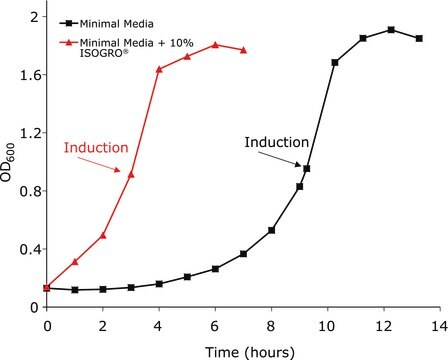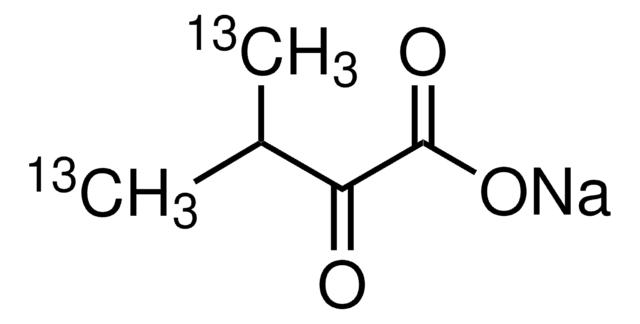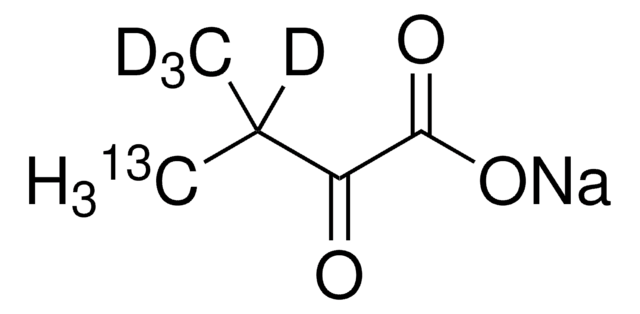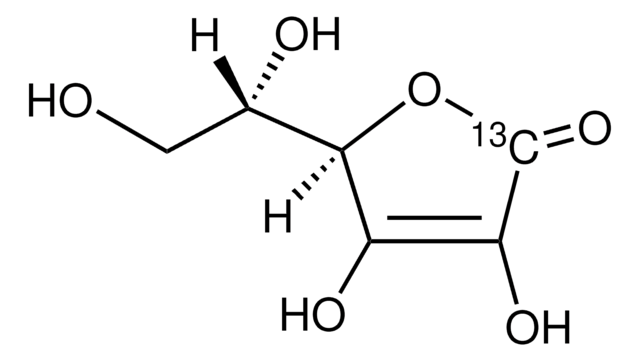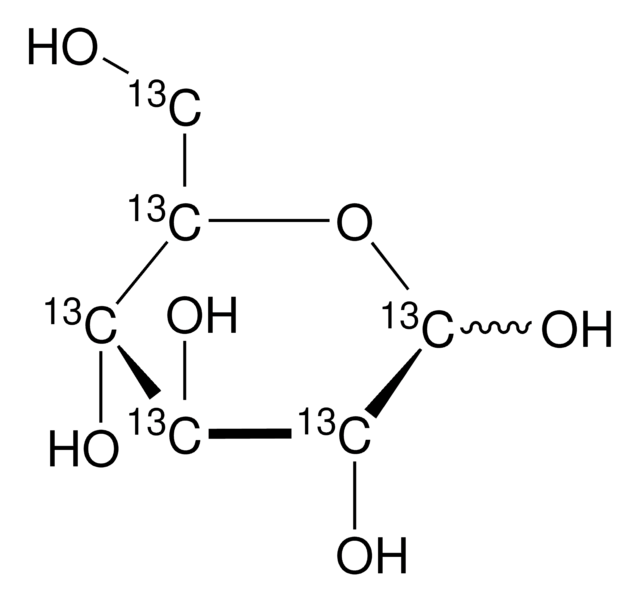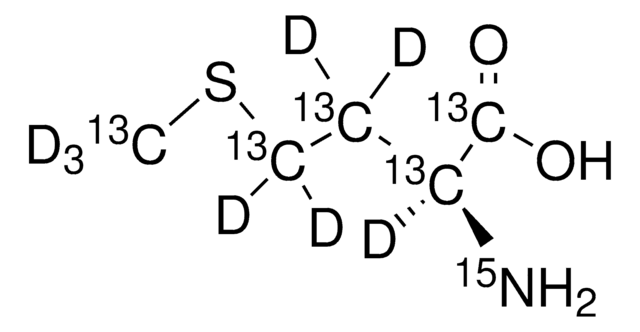608297
ISOGRO®-13C,15N,D Powder -Growth Medium
98 atom % 15N, 97-99 atom % D, 99 atom % 13C
Sign Into View Organizational & Contract Pricing
All Photos(1)
About This Item
Recommended Products
isotopic purity
99 atom % 13C
98 atom % 15N
97-99 atom % D
Quality Level
form
solid
technique(s)
bio NMR: suitable
protein expression: suitable
storage temp.
−20°C
Related Categories
General description
ISOGRO® media is required for overcoming the growth limitations of minimal media. ISOGRO products are lysates of algae grown with stable isotopes (13C, 15N, and/or D). ISOGRO®-13C,15N,D powder -growth medium gives uniform labeling for protein expression NMR (nuclear magnetic resonance) studies.
A typical algal lysate (ISOGRO medium) contains: 30% salts, 3% water, 2% glucose and 65% amino acids/peptides.
A typical algal lysate (ISOGRO medium) contains: 30% salts, 3% water, 2% glucose and 65% amino acids/peptides.
Application
ISOGRO®-13C,15N,D Powder -Growth Medium has been used for the generation of isotopically labeled recombinant tau to identify multiple phosphorylations in tau by NMR (nuclear magnetic resonance) spectroscopy.
Packaging
This product may be available from bulk stock and can be packaged on demand. For information on pricing, availability and packaging, please contact Stable Isotopes Customer Service.
Legal Information
ISOGRO is a registered trademark of Merck KGaA, Darmstadt, Germany
Storage Class Code
11 - Combustible Solids
WGK
WGK 1
Flash Point(F)
Not applicable
Flash Point(C)
Not applicable
Choose from one of the most recent versions:
Already Own This Product?
Find documentation for the products that you have recently purchased in the Document Library.
Nuclear Magnetic Resonance Spectroscopy for the Identification of Multiple Phosphorylations of Intrinsically Disordered Proteins.
Danis C, et al.
Journal of Visualized Experiments, 118, doi: 10-doi: 10 (2016)
Carissa L Perez et al.
Cell metabolism, 8(3), 266-274 (2008-09-03)
Although studies in C. elegans have identified numerous genes involved in fat storage, the next step is to determine how these factors actually affect in vivo lipid metabolism. We have developed a (13)C isotope assay to quantify the contribution of
Xavier Hanoulle et al.
The Journal of biological chemistry, 282(47), 34148-34158 (2007-09-15)
The chemotaxis and integrin-mediated adhesion of T lymphocytes triggered by secreted cyclophilin B (CypB) depend on interactions with both cell surface heparan sulfate proteoglycans (HSPG) and the extracellular domain of the CD147 membrane receptor. Here, we use NMR spectroscopy to
Weizhi Liu et al.
The Journal of biological chemistry, 284(45), 31336-31349 (2009-08-28)
The eukaryotic translation initiation factor eIF4E recognizes the mRNA cap, a key step in translation initiation. Here we have characterized eIF4E from the human parasite Schistosoma mansoni. Schistosome mRNAs have either the typical monomethylguanosine (m(7)G) or a trimethylguanosine (m(2,2,7)G) cap
Melanie H Smith et al.
The Journal of biological chemistry, 289(37), 25670-25677 (2014-08-03)
A substantial fraction of nascent proteins delivered into the endoplasmic reticulum (ER) never reach their native conformations. Eukaryotes use a series of complementary pathways to efficiently recognize and dispose of these terminally misfolded proteins. In this process, collectively termed ER-associated
Articles
Our company presents an informative page regarding the use of ISOTEC Stable Isotopes to Amplify Recombinant Protein Expression with ISOGRO.
Utilizing ISOGRO® Supplementation of M9 Minimal Media to Enhance Recombinant Protein Expression.
Our team of scientists has experience in all areas of research including Life Science, Material Science, Chemical Synthesis, Chromatography, Analytical and many others.
Contact Technical Service